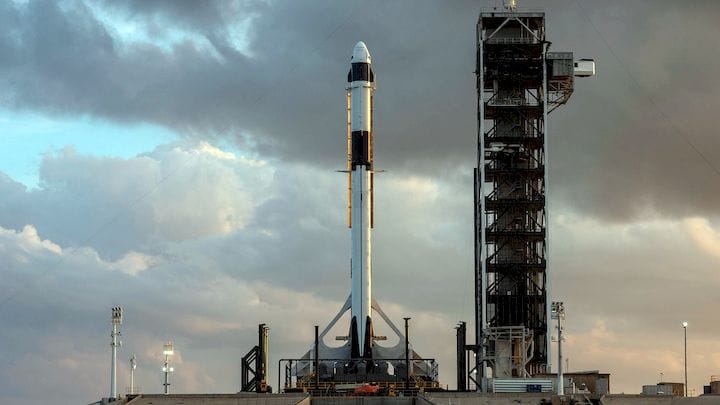![The Dragon 2 space capsule atop a Falcon 9 rocket [Source: SpaceX]](https://fabbaloo.com/wp-content/uploads/2020/05/image-asset_img_5eb093b32cef0.jpg)
We have some good news to report: it seems that the SpaceX “anomaly” did not involve 3D printing technology.
What is the SpaceX Dragon incident? On April 20th, SpaceX was performing a routine test of the escape thrusters on their Dragon 2 capsule at Cape Canaveral Air Force Station. During the final stage of the test, which involved firing the SuperDraco thrusters, there was an “anomaly”, which led to a “RUD”.
“RUD” is SpaceX terminology for “Rapid Unscheduled Disassembly”, and “anomaly” means something really bad happened. Basically, the capsule blew up. Fortunately no one was on board at the time. You can see what happened in this leaked video:
Note the expressions of disbelief by the test operators.
After the event I was quite concerned that the blame for this incident and the corresponding delays to the resumption of US space travel capabilities, so I wrote a piece describing the risks created by the SpaceX incident. In short, if it turned out that if the 3D printed SuperDraco engines were at fault, then that could have past a dark shadow over use of the technology in the aerospace world.
SpaceX Incident Analysis
Now, after months of analysis — and utter public silence — SpaceX has released a report on what happened, and it is good news for 3D printing.
It seems that a leaky valve in the liquid oxidizer lines mistakenly allowed a slug of the oxidizer, nitrogen tetroxide, to pass through. The high pressure in the lines slammed it against a helium check valve, which broke and resulted in the RUD that quickly followed.
If you’d like more detail on exactly what happened, space enthusiast Scott Manley explains in some detail how this explosion occurred:
Strong Metal 3D Printing
Meanwhile, SpaceX says:
“Additionally, the SuperDraco thrusters recovered from the test site remained intact, underscoring their reliability.”
While I suspect they won’t be using these specific thrusters on future missions, the point is that they were not only sufficiently strong to withstand normal operational stresses, but also strong enough to survive a catastrophic explosion.
Bright Future For Aerospace Metal 3D Printing
Rather than casting a dark cloud, it now seems this incident is providing a boost to 3D printing technology in the minds of observers.
That is an incredibly important point for the aerospace industry, which has for the past couple of years invested heavily in 3D printing, particularly in metal capabilities. They are using the tech to produce parts with revolutionary properties that could only have been imagined in the past.
Now, that future is secure.
Via SpaceX











Years of experimentation are leading to affirmation: 3D printing in space, for in-space use, is looking viable.